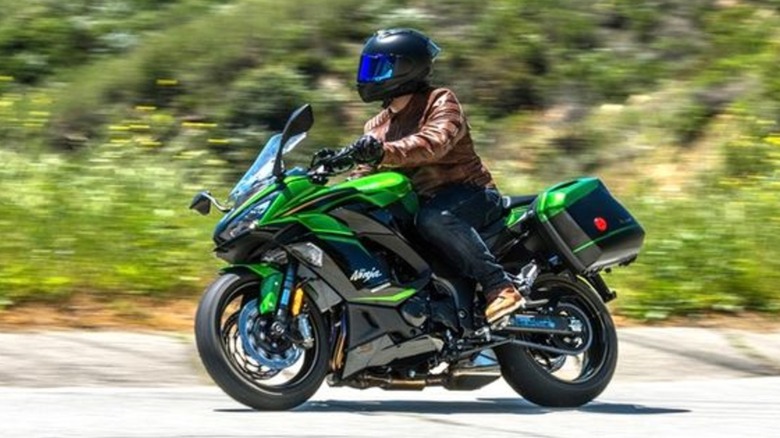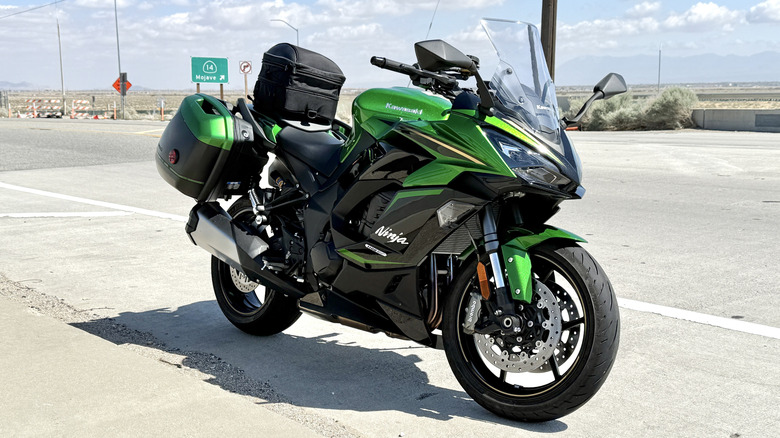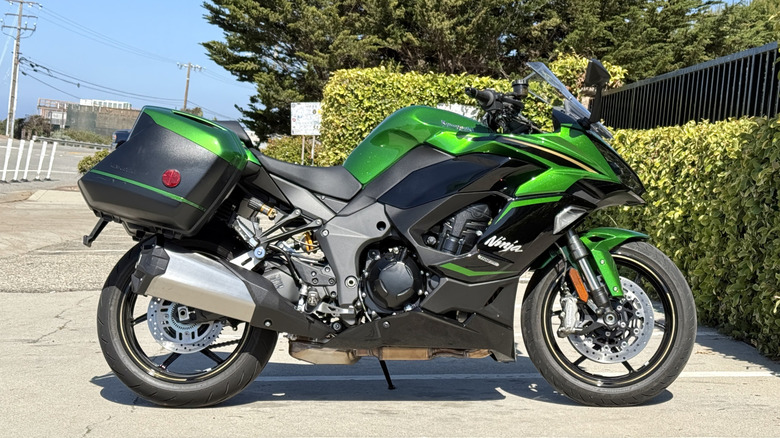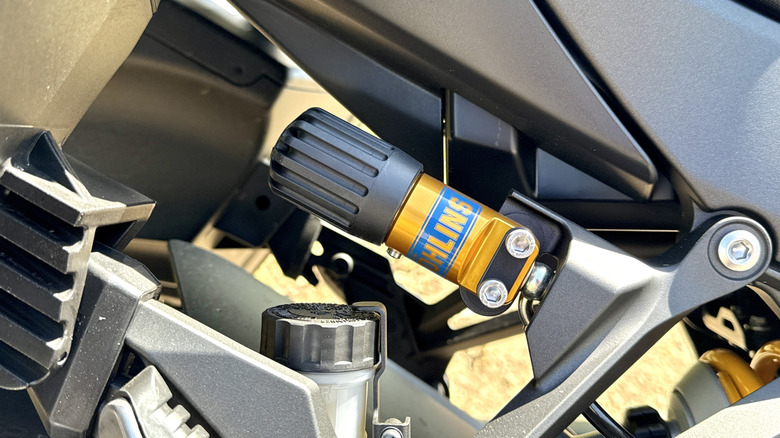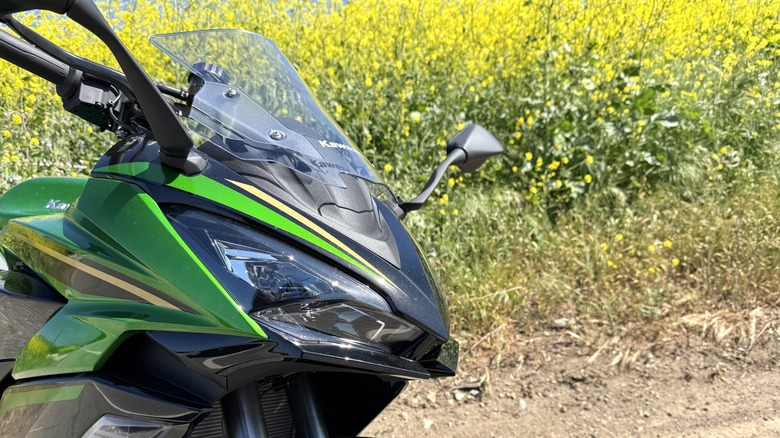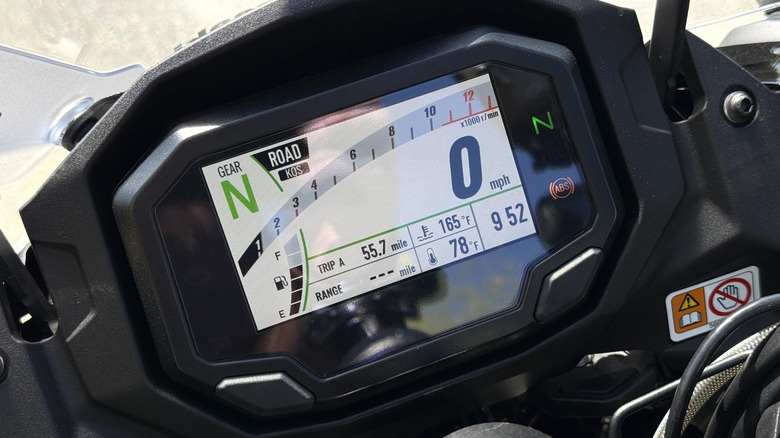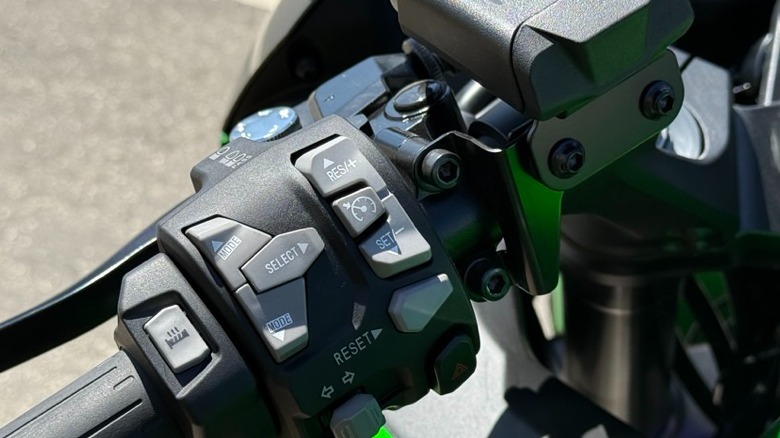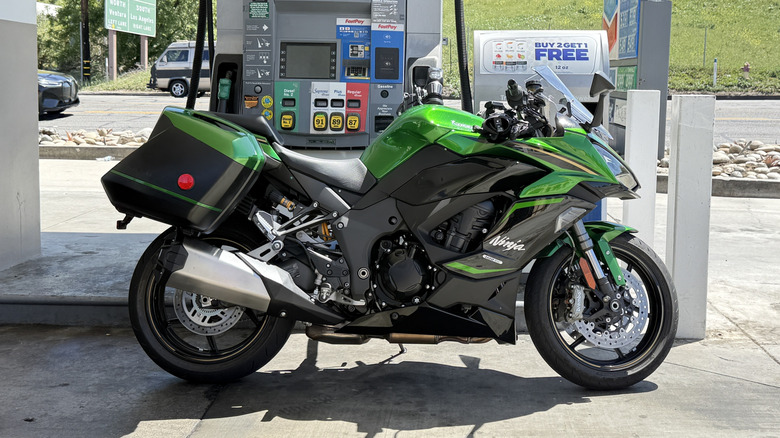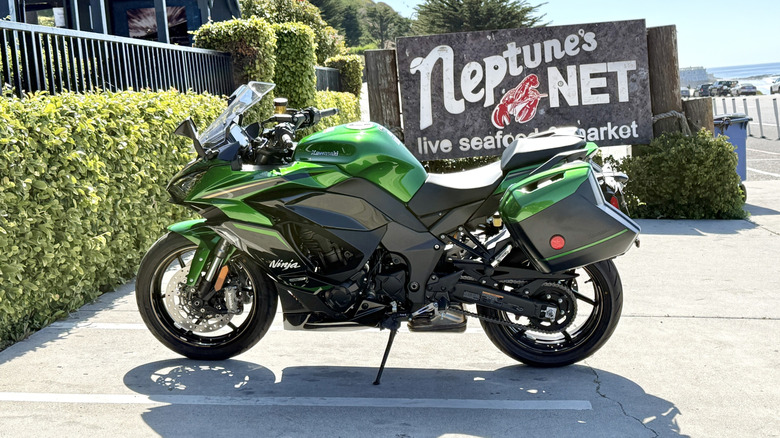2025 Kawasaki Ninja 1100SX Review: The Sport-Touring Bike That Changed My Mind
For the third time in less than an hour, I was pulled over on the side of the road in white-out fog conditions. I was layered up with all my winter riding gear, my winter riding gloves, and my thickest wool socks. Even with the heated grips on, none of it was enough to keep me from shivering in the 37-degree temperatures on Angeles Crest Highway. I had to stop periodically to take my hands out of my gloves and warm them next to the Kawasaki's engine block. That's how my day on the all-new 2025 Ninja 1100SX SE started, but it was far from over.
I had decided to take Kawasaki's "Advanced Sport Tourer" on a camping trip via my favorite local mountain pass, testing out all the 1100SX's new features like the new larger engine, the new suspension, and the new quick shifter. If my fingers went numb though, I probably wasn't going to make it in one piece. So, I abandoned the mountain path to my camping destination and opted for the high-desert highway instead. A few hours later and about 100 miles south of my destination, the winds had picked up, pushing the Ninja hard left and hard right with no warning. I had a new problem.
A new challenge: wind
Cross-winds between 30 and 40 mph were moving me sideways in my lane and putting me at serious risk of dropping a bike that wasn't mine at freeway speeds. I pulled off the freeway to check the weather and the winds weren't going to let up. According to the weather app, conditions would be like this all day, and most of the night. I abandoned my camping idea and pointed the Ninja back south towards my apartment in Los Angeles. I was dejected and depressed about missing a night of sleeping under the stars, but determined to stretch the Ninja's legs.
After a few hundred miles of abject misery, I arrived home and re-grouped. When the fog wasn't obstructing my view and when the wind wasn't trying to toss me into the next lane, I'd had a pretty good first ride on the 1100SX. It was comfortable and it had impressive power delivery – at least in the few moments I could twist the throttle open. My new plan: I'd take the Ninja out the next day on nearby canyon roads and see what it had to offer there. It did not disappoint.
New power for the 1100SX
The next day, with my gear now dry, I headed for better roads without the windy conditions or interminable fog. There, I could thoroughly explore the upgraded Ninja. The 2025 Ninja 1100SX is a significantly updated bike with more displacement than its predecessor, the 2024 1000SX. The previous bike used a 1,043cc four-cylinder while the new bike gets revised engine internals that increase displacement to 1,099cc.
According to Kawasaki, the changes in bore and stroke along with the revised pistons and other revisions mean stronger low-to-mid range power. Output on the new 1100SX is a healthy 134 horsepower and 83.2 lb-ft of torque: technically a lower amount of power than the previous bike, but still plenty of thrust.
Power is sent to the rear tire via a six-speed transmission with an assist & slipper clutch. Rotate your right wrist rearwards and there's a significant surge of power from the Ninja – it will keep up with most sport bikes on enthusiastic acceleration runs without issue. In true sport-touring fashion though, it's not shocking. Changing the various available riding modes (Sport, Road, Rain, Rider) adjusts power delivery and traction control and gives me some leeway with the front tire. I found myself using the rain mode exclusively in the wet, but Sport for most of my remaining time on the bike and it kept things entertaining along canyon roads.
Ideal riding position for sport and touring
The 1100SX's high handlebars and well-placed foot pegs offer a riding position that strikes a near-perfect balance between comfort and fun. After 300 miles of high-stress riding in one day, and a few hundred more miles the next, I had no discomfort in my wrists. I wasn't leaning forward or putting a lot of weight on my arms, so the forearm discomfort that tends to come with aggressive sport bikes — like the CBR1000RR I tested earlier this year – was gone. Show the 1100SX a set of corners though and it's happy to stitch them together with quick direction changes and a light feel from the handlebars. It properly earns its place amongst the best Kawasaki bikes for city riding.
Quoted curb weight from Kawasaki for the 1100SX is 516 pounds, but the bike felt much lighter on its feet. The 4-piston, 300mm, Brembo front brakes and the 260mm rear brakes provided plenty of stopping power. Even under heavy braking, the clutch lever and the foot pedal never felt grabby or aggressive – instead they provided positive physical feedback. Both the clutch and brake lever are adjustable, meaning they were easily within reach of my hands after a few clicks to set them in the right positions. The clutch action, much like the brake lever, was easy and my hands never tired even after two long days in the saddle.
Comfort for the long haul
On top of having no discomfort in my wrists, I wasn't uncomfortable anywhere else either. My knees didn't feel cramped and my backside wasn't any worse for wear. To avoid a sore butt after that kind of mileage is a special trick for a bike as sporty as the Ninja 1100, and one I was particularly happy about. The seat on the Kawi is well padded enough for long distances and short commutes alike, and the average seat height of 32.3 inches meant I could flat-foot it at stop lights while wearing riding boots.
A big part of the recipe for my comfort, on top of the excellent riding position and comfortable seat, was the SE trim's suspension. Along with the Brembo brakes mentioned earlier, and stainless-steel front brake lines to feed them, the SE gets an Öhlins S46 rear shock. The rear suspension also has remote preload adjustment so you can easily set the bike up for whatever weight you happen to be carrying on your next failed camping trip (although hopefully yours is more successful than mine).
The windscreen is all wrong
With the high winds I experienced on my initial ride, I had a hard time judging the Ninja's windscreen and whether it was deflecting much head-on wind. On day two, however, it was clear to me that the windscreen wasn't doing much; if anything, it was making my ride worse. The Ninja 1100 has a four-position adjustable windscreen which is nice on paper, but at 5-foot-9, there was no position with it that worked for me. Wind was aimed either right at my chest, or directly at my helmet, which makes all kinds of unholy racket at highway speeds.
To make sure I wasn't imagining this poor placement, I did multiple stretches on the bike with the windscreen in different positions. I took it out for back-to-back rides wearing different helmets, thinking that might be the culprit (it wasn't). I even took my personal bike, a Yamaha XSR900 out for a ride to compare the wind levels. The Ninja 1100 was worse than even my no-windshield naked bike. If this were my bike, I'd immediately remove the windscreen or buy a taller one before ever riding it away from the dealership.
Features and tech
The windscreen was disappointing, but there were some other impressive features worth noting on the Ninja. The optional heated grips were a nice addition, though I struggled to find a use for them at anything above city-commuting speeds. Once you're going 70 mph in the cold, they lose their effectiveness. The optional side tanks were also a great addition, with enough storage space for two days worth of camping gear, including a tent, sleeping bag, small propane stove, and enough food to last the night. Too bad I didn't get to use any of it.
On a few of the longer freeway stints I did with the Ninja, I was happy to have cruise control as well. Setting the speed and releasing a bit of pressure from my right hand went a long way towards reducing fatigue. The cruise control system, however, can be prone to lurching on uphill and downhill sections of highway.
The 4.3-inch TFT screen was large and bright enough for me to see my speed and RPMs at a quick glance, and the controls located on the handlebars were all in logical, easily-reachable locations. Finally, the USB port fitted to the Ninja's handlebars is a good addition for particularly long rides, but mine didn't want to work. While testing the bike I was unable to charge my phone or any other devices via the USB port.
Approachable pricing
The standard Ninja 1100SX has an MSRP of $13,699 (Kawasaki doesn't list a destination fee). That price includes all the electronic rider mode selection, cruise control, the USB port, and the adjustable windscreen. The SE has an MSRP of $15,399 — a $1,700 premium over the standard bike — and it adds the Öhlins rear shock, Brembo brakes, and the heated grips. It's another $822.95 for the 28-liter side cases that were equipped to my test bike.
That's a significant discount compared to the ZX-10R or other supersport liter bikes, and if you're anything like me, your back will thank you for buying the upright bike instead. With all the highway riding I did on the Ninja, I averaged nearly 40 miles per gallon, but even with some enthusiastic riding in the canyons, I was surprised to see numbers in the high-30s.
Ninja 1100 rivals like the Yamaha Tracer 9 and the Honda NT1100 offer similar feature sets for a bit less money, but neither offers an inline four-cylinder engine. The Suzuki S1000GT+ is also available and offers a 999cc four-cylinder, with similar pricing to the Ninja.
2025 Kawasaki Ninja 1100 Verdict
I've got a riding friend who's been trying to convince me to get a sport-touring bike for years. He's constantly going on about the benefit of having a bike comfortable enough for 500-mile days, but entertaining enough that you'll be glad you brought it on any mountain road. That's exactly the kind of bike the Kawasaki Ninja 1100SX is and, after a few weeks in the saddle, I was picking up exactly what he's been putting down for years.
The 1100SX in particular looks aggressive at a stand-still (the Emerald Blazed Green paint is a favorite of mine), there's a nice low rumble from the exhaust, and the up-sized 1100cc engine gives you plenty of power when you need it. The ride is smooth, the seat is comfy, and it's still a joy to ride quickly. The biggest drawback was the windscreen and the unavoidable wind noise and discomfort it provided, but even that wasn't enough to get in the way of me thoroughly enjoying my time with the Ninja.
